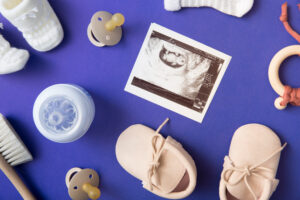Swaddling is a practice that has been used for centuries to make babies feel safer and more comfortable. It can also help them sleep better.
Start by spreading out a blanket and folding down one corner. Make sure the baby is wearing a light diaper and is dressed in a short onesie or sweater to avoid overheating.
1. Choose the Right Blanket
Swaddling can help a baby sleep better and longer. It also helps babies to stay in a safer sleeping position on their back, which reduces the risk of Sudden Infant Death Syndrome (SIDS).
To swaddle your baby, start by spreading out a receiving blanket on a flat surface and folding one corner down. Next, place your baby on top of the blanket with their head above the fold.
Remember, the swaddle should never be so tight that it restricts the baby’s breathing or that their legs get straightened out, which can lead to hip problems such as hip dysplasia and dislocation. Health professionals should remind families of this danger when discussing swaddling with them.
2. Wrap the Baby’s Arms
Some babies will resist the swaddle, but with persistence it may become their favorite calming tool. If a baby is resisting the swaddle, try incorporating other calming techniques, such as swaying and shushing.
Begin by laying the blanket down, ensuring it is large enough to cover the baby. Then fold one corner down so it forms a diamond shape.
Ensure the top of the diamond is at the base of your baby’s neck. You do not want the wrap to be too high on your newborn’s chest, as this could cause them to overheat and restrict their breathing. This is why a muslin blanket is recommended. This type of blanket allows the baby’s chest to rise normally during breathing.
3. Wrap the Baby’s Legs
Swaddling is a wonderful tool to help babies feel secure. However, if it is done incorrectly, it can cause serious harm. Here are some tips to ensure that you swaddle your baby safely and correctly.
First, place your baby on the cloth with their shoulders at the top hem of the long corner. Fold the right side of the swaddle across the arm and chest, tucking under the left arm. It is important that your baby’s legs are not restricted, so make sure the swaddle allows for a natural frog leg position to reduce hip dysplasia risk. Lastly, keep the bottom of the blanket loose enough so your baby can avoid overheating.
4. Wrap the Baby’s Chest
As the baby grows, parents can choose whether to include their infant’s arms in the swaddle or not. However, they should ensure the swaddle is not too tight and that their infant can breathe freely. Wrapping that is too tight can restrict the baby’s breathing and may cause hip dysplasia or dislocation.
Swaddling can help babies feel safe and secure, similar to how they felt in their mother’s womb. Research shows that wrapped babies are less likely to initiate rooting behavior and are more able to self-soothe. It also helps reduce physiologic distress during heel lancing in preterm infants, and may even improve neuromuscular development 2,21.
5. Wrap the Baby’s Back
Newborn babies need to have their arms free to help quell the startle reflex. If they are too swaddled and cannot move their arms, they may become frustrated and startle themselves awake.
Using the longer side of the wrap, bring it across Baby’s body diagonally from shoulder to bum, and tuck the extra fabric underneath. Make sure that the swaddle is tight enough to secure the arms but not so tight that it can restrict their breathing or cause hip problems. Then bring the other tail across and behind Baby’s back.
6. Wrap the Baby’s Head
Baby’s heads can become overheated in a tightly wrapped blanket, so make sure to monitor their temperature regularly. Look for signs of overheating such as sweating, flushed cheeks or heat rash. If you notice these symptoms, loosen the wrap to reduce the risk of overheating and to keep them comfortable.
As a reminder, it is important to follow safe sleep guidelines and place babies to sleep on their backs to reduce the risk of SIDS and accidental suffocation. Swaddling creates the snug, familiar feeling they experienced in the womb and helps them relax for better sleep. But remember, the swaddle should not be tight enough to restrict hip movement which could lead to hip dysplasia.
7. Wrap the Baby’s Neck
Using a piece of muslin, create a little pillow for your baby’s neck. This will help support their head and prevent it from rolling.
Some babies may resist being swaddled, especially once they learn how to roll. That’s OK – just switch to another sleep routine, like the sleep sack.
Remember that swaddling can be a great way to soothe fussy newborns and infants. Just make sure to use a thin blanket and check periodically to ensure the baby is not overheating. Also, never swaddle a baby above the shoulders. This could cause hip dysplasia. Instead, use the ‘hip-healthy’ swaddling technique to avoid this issue.
8. Wrap the Baby’s Head
Newborns and babies in the hospital nursery are often swaddled to comfort them and help with their sleep. But when they come home or to day care, swaddling is not always appropriate or safe.
For baby’s safety, the head of the swaddle should not be at or above your baby’s collarbone. The neckline should also be snug enough to prevent your baby from slipping out of the wrap.
It is important to note that swaddling is only recommended for infants until they are able to roll over. Once your baby starts rolling, it is time to start transitioning out of the swaddle into sleep sacks and wearable blankets.





